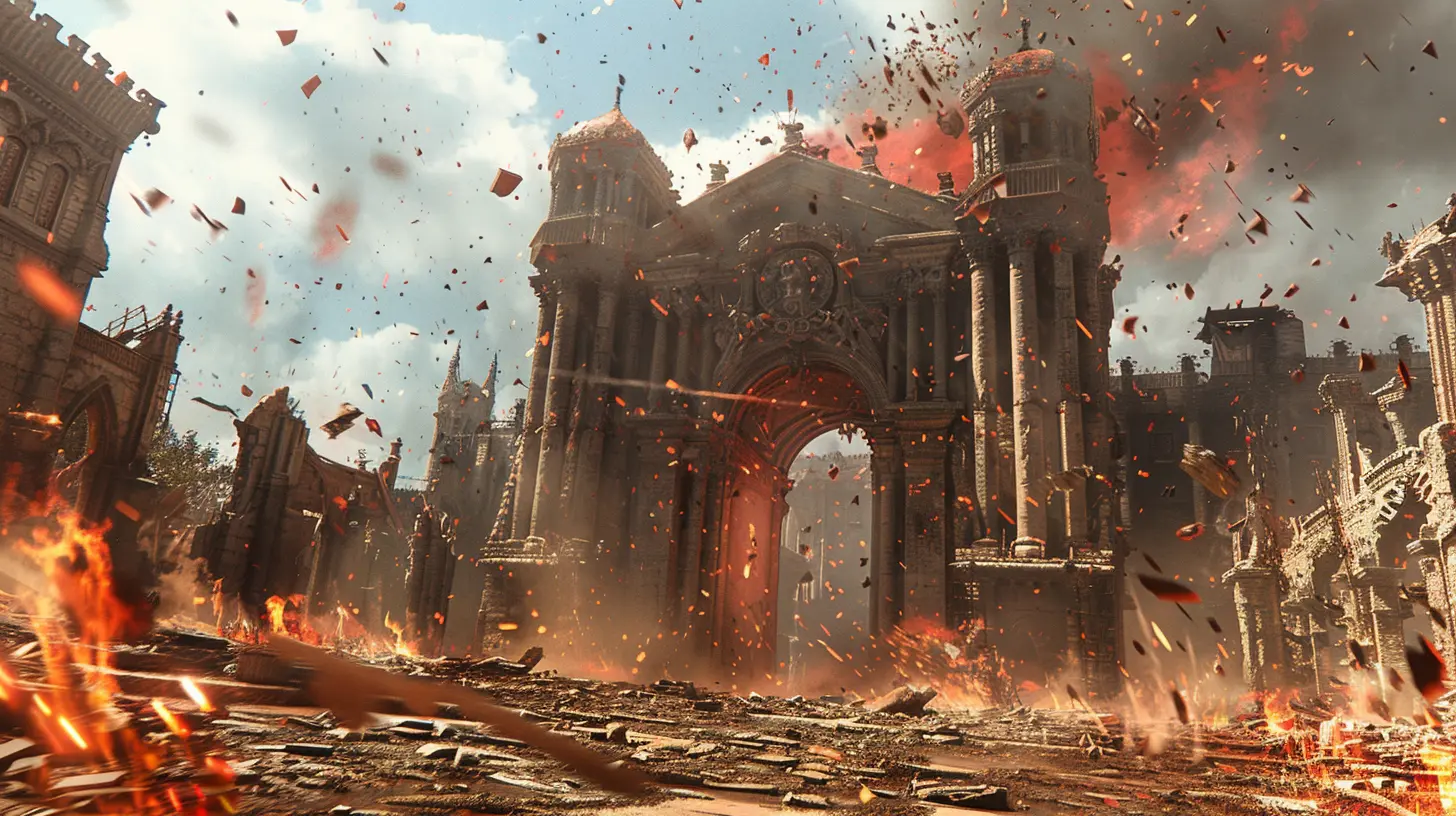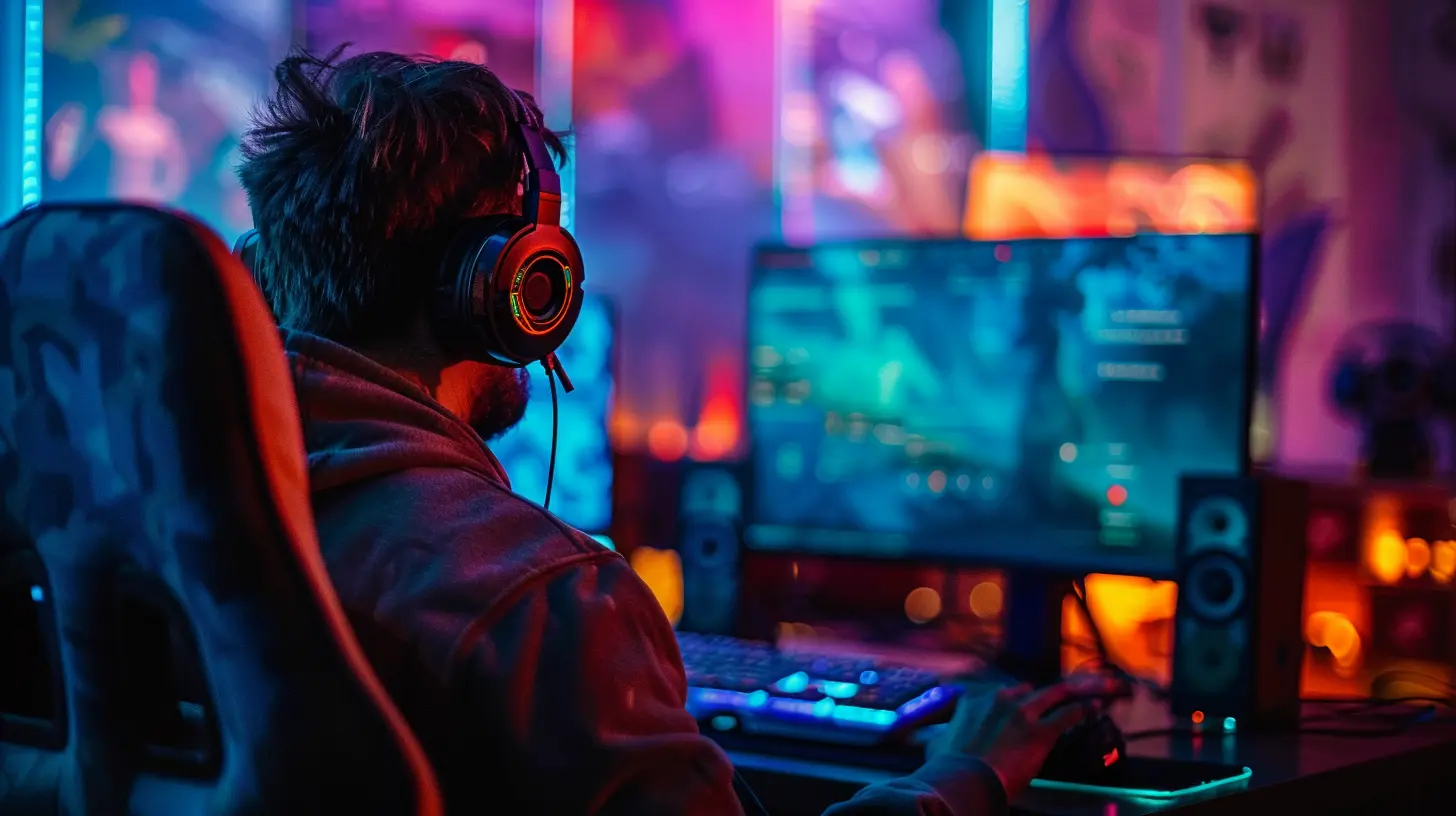Leveraging Sound Effects for Better Immersion
11 October 2025
Ever played a game with the sound off? Kinda hollow, right? You might see the action, the explosions, the chaos—but it just doesn’t hit the same. That’s the magic of sound. When done right, sound effects can pull you deep into a game, making your heart race, your palms sweat, and your brain tricked into thinking you're right there in the middle of the action.
So if you're a game dev, sound designer, or just a super-fan curious about the behind-the-scenes magic, let’s dive into why leveraging sound effects is key to creating unforgettable gaming experiences.

Why Sound Effects Matter More Than You Think
Let’s get one thing straight—sound effects aren’t just fancy noise. They’re storytellers, mood-setters, and emotional triggers all rolled into one. The right sound can make a simple moment feel epic—or turn a suspenseful moment into a full-blown anxiety spiral (yes, I’m looking at you, horror games).Think about it: when you hear a sword clashing, a gun reloading, or even footsteps in a dark corridor—you feel something. Your brain fills in the blanks and, suddenly, you’re not just controlling a character; you become them.

The Psychology Behind Sound in Games
Sound does more than you realize. Our brains process audio cues faster than visual stimuli. That means players will often react to a sound before they even see what caused it.Ever jumped out of your seat just from a creepy sound before anything scary happened on screen? That’s no accident. It’s intentional, psychological design at work. Game developers use sound to manipulate tension, anticipation, and excitement—even when not much is happening visually.
Examples of Psychological Sound Cues
- Rising pitch: Triggers anxiety and urgency (think alarms or approaching danger).- Low-frequency rumbles: Create tension (often used in horror).
- Sudden silence: Catches attention—players instinctively know something’s about to go down.

Sound as a Storytelling Tool
Games like The Last of Us, God of War, and Red Dead Redemption 2 masterfully use sound to tell deep, emotional stories. A distant howl, a creaking floorboard, the rustling wind—every tiny detail adds narrative depth.You can “hear” the desolation of an abandoned city or the emotional weight of a character’s journey just by listening. That’s rich, immersive storytelling using nothing but carefully crafted audio.

Boosting Gameplay Mechanics with Sound
Sound effects aren’t just about ambiance—they impact how we play.Audio Feedback for Actions
Want to make a player feel like a badass? Give them crunchy, satisfying sound feedback when they land a hit or solve a puzzle. That tiny “click” or deep “boom” reinforces success and makes the game feel responsive.Directional Audio for Navigation
FPS games like Call of Duty or Apex Legends rely heavily on directional sound. You hear footsteps or gunfire and instantly know where to turn. That’s not just cool—it’s critical to strategy and survival.Creating Atmosphere and Emotional Tone
Every genre thrives on audio. Let’s break it down:Horror Games
Silence followed by a sudden screeching violin? Instant heart attack. Horror lives and dies (literally) by how well it manipulates sound.Action Games
Explosions, weapon reloads, sirens—the soundscape keeps adrenaline pumping. It’s chaos, but controlled chaos, with every cue sucking you deeper into battle.Adventure and RPGs
From ambient wildlife to medieval tavern tunes, these games use sound to make worlds feel alive. You can almost smell the forest or feel the chill in the air when the audio is spot-on.
Essentials of Effective Game Sound Design
You don’t need a million-dollar studio to get this right. But there are some golden rules to follow when designing immersive sound:1. Consistency is Key
Sounds should match the game world. A sci-fi laser gun shouldn’t sound like a cap gun from 1950. Keep it believable—even in fantasy or futuristic settings.2. Layer Your Sounds
One action often involves multiple micro-sounds. For example, firing a weapon might include:- Trigger click
- Gunpowder blast
- Bullet casing hitting the floor
- Echo in the environment
Layering creates depth and makes sounds feel real.
3. Balance Is Everything
Too much noise and players feel overwhelmed. Too little, and it’s lifeless. Find the sweet spot. Let important sounds shine and keep background elements subtle but present.4. Adapt the Sound to the Player’s Environment
Dynamic audio is the future. Think adaptive sound systems that shift based on player actions or in-game environments. If you enter a cave, the echoes change. If you turn your back to a sound source, it muffles. That’s what we call real immersion.Don’t Sleep on Spatial Audio
Have you tried gaming with spatial (or 3D) audio? It’s like going from black-and-white to full-color. You can tell if a sound is above, below, or behind you. Absolute game-changer—literally.Games like Hellblade: Senua’s Sacrifice use binaural audio to make voices feel like they’re whispering right into your ears. It’s creepy. It’s genius. It’s unforgettable.
The Role of Music vs. Sound Effects
Let’s not confuse the two. Music sets the mood, but sound effects anchor you to the reality of the in-game world. That said, blending both can create serious emotional highs. When done right, you’re not just playing the game—you’re feeling it.Ever gotten chills during a boss fight because the music swelled right as the monster screamed and the world around you exploded? That’s the combo punch of perfect audio design.
Tools and Tech That Make It Happen
There are some insane tools out there for sound design. Here are a few to keep on your radar:- FMOD & Wwise – Industry-standard audio middleware for dynamic in-game audio.
- Audacity – Great for beginners learning sound layering and editing.
- Reaper & Pro Tools – High-end digital audio workstations for detailed sound design.
Also, most major game engines (Unity, Unreal Engine) have built-in audio tools that support spatial sound, real-time mixing, and environmental effects.
Best Practices for Indie Developers
Indie devs, listen up. Even with a small budget, you can deliver killer sound design. Here’s how:- Use royalty-free sound libraries like Freesound or Sonniss.
- Record your own sounds—your kitchen can be a goldmine!
- Collaborate with freelance sound designers on platforms like Fiverr or Upwork.
- Focus on quality over quantity. One perfectly placed sound is better than 10 mediocre ones.
Common Pitfalls to Avoid
Some audio traps are easy to fall into. Here's what to steer clear of:- Repetitive sounds: Hearing the same grunt every time you jump? That gets old—fast.
- Volume imbalance: A too-loud explosion can mask important cues like enemy footsteps.
- Poor syncing: Lag between action and audio kills immersion instantly.
- Flat audio: No variation in pitch, timing, or intensity = boring and robotic.
Real-World Examples of Exceptional Sound Design
Let’s throw some flowers where they’re due:- Resident Evil 2 Remake: The creaking hallways and zombie groans almost make you feel the decay.
- The Legend of Zelda: Breath of the Wild: Subtle environmental sounds shift with time and weather, making the world feel alive.
- Battlefield Series: Known for its explosive, realistic combat audio that reacts to your surroundings dynamically.
Wrapping It Up
Bottom line? Great sound effects are the unsung heroes of game immersion. They impact gameplay, stir emotions, and breathe life into digital worlds. Whether you’re navigating a foggy forest, dodging bullets in a war zone, or solving puzzles in an ancient temple, what you hear can be just as important as what you see.So next time you're crafting your next game or just playing one, take a moment to appreciate the footsteps, the whispers, the wind—because without them, you're just pushing pixels.
all images in this post were generated using AI tools
Category:
Game Content CreationAuthor:

Jack McKinstry
Discussion
rate this article
1 comments
Ivory Miller
Sound effects enhance emotional depth and gameplay immersion.
October 20, 2025 at 4:20 AM

Jack McKinstry
Absolutely! Sound effects play a crucial role in creating a more engaging and emotionally resonant gaming experience.


